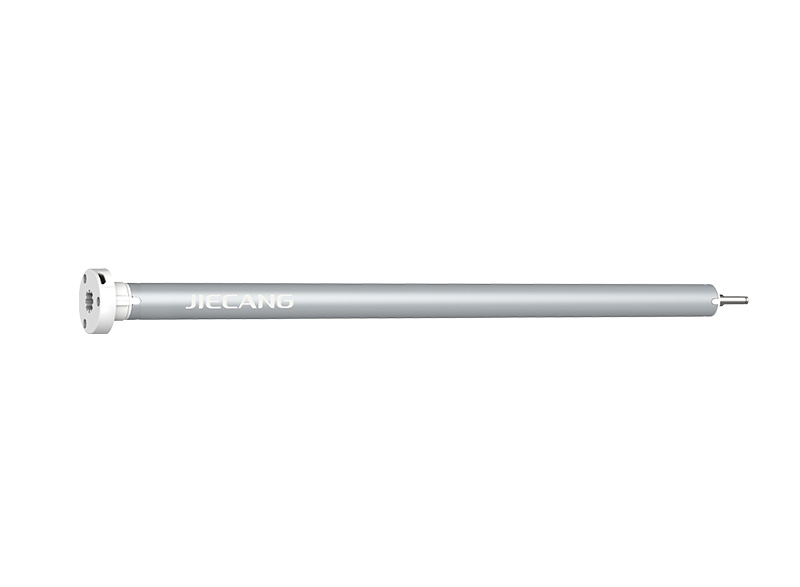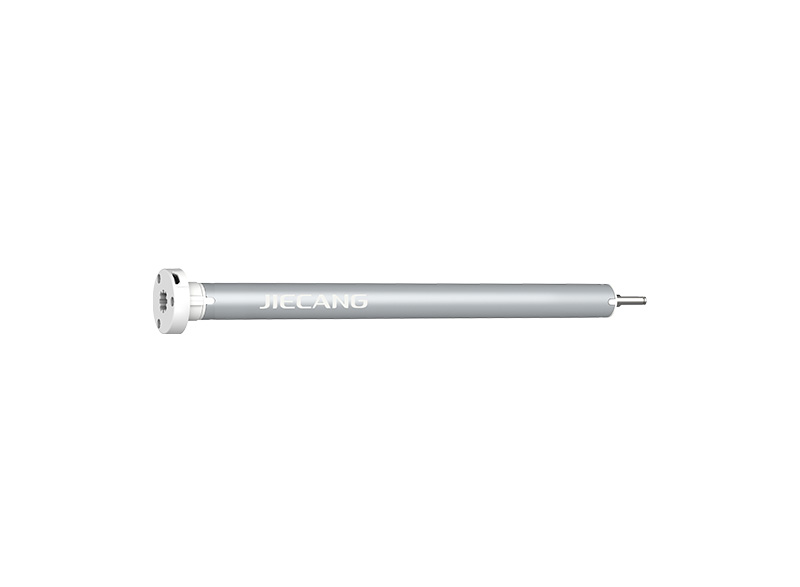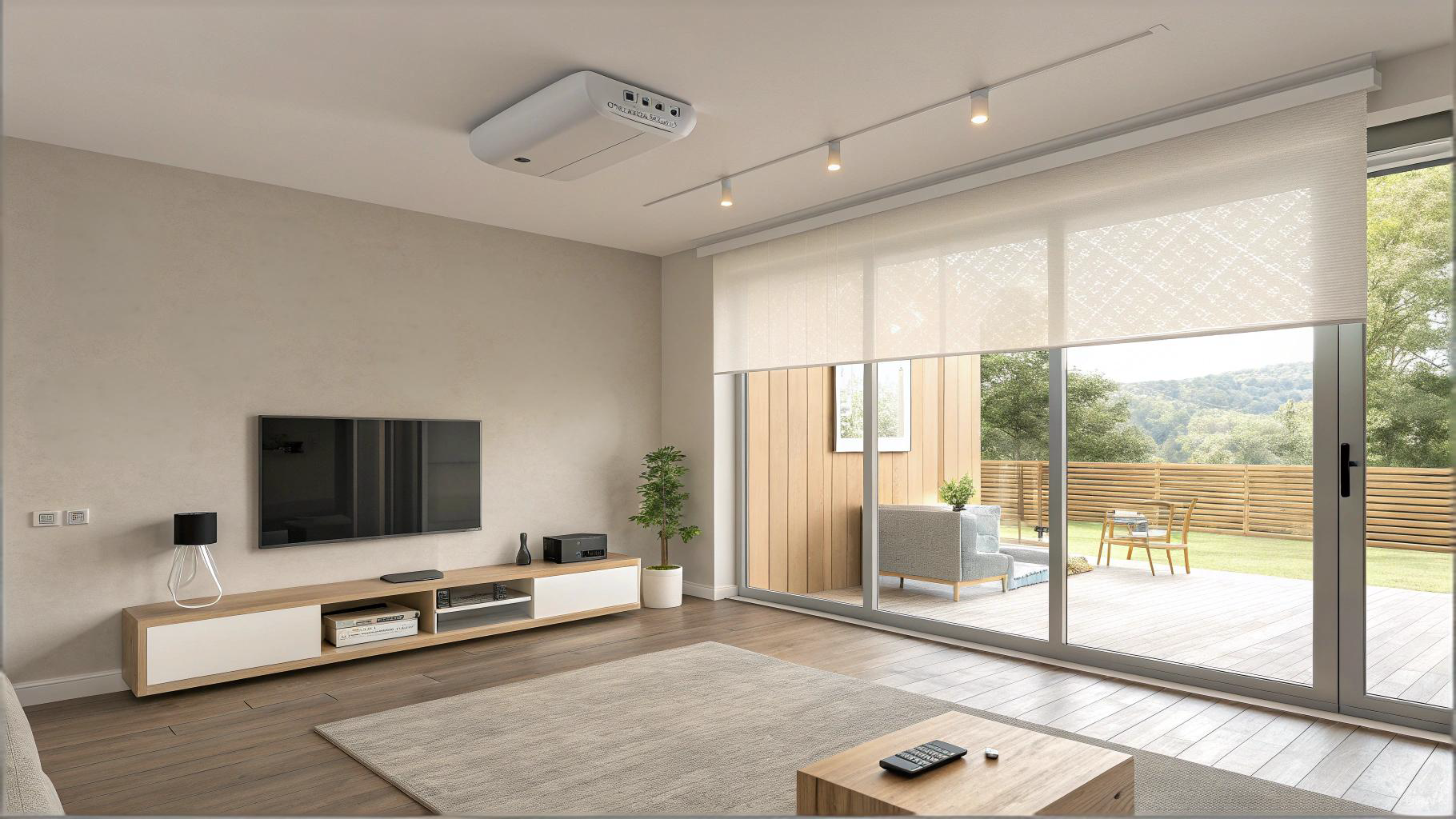A tubular motor is a compact, cylindrical electric motor engineered to fit directly inside the roller tube of blinds, shades, shutters, awnings, or industrial roll-up systems. With typical diameters from 15 to 45 mm, tubular motors deliver rotational drive without occupying external space, making them the most widely adopted drive technology in modern automated shading and roll-up solutions.
This integrated, hidden-in-tube design enables automatic lifting, lowering, or opening/closing of shading systems with quiet, stable, and precise motion. Because the motor sits inside a metal tube, it remains well-protected, aesthetically invisible, and acoustically damped—benefits that are essential in high-end homes, office buildings, and commercial environments.
In recent years, the tubular motor has also become a key component in smart-home ecosystems, energy-efficient building facades, and IoT-enabled shading automation. Manufacturers such as JIECANG have contributed significantly to this evolution with advanced AC/DC tubular motor series and multi-protocol smart control solutions.

Although compact, a tubular motor integrates several critical components inside a cylindrical housing:
The electric motor generates rotational motion. Depending on the application, motors may be AC (for high force) or DC (for quieter, low-power shading systems).
A precision gear train slows down motor speed while increasing torque—allowing even small-diameter motors to lift heavy roller shutters or large fabric shades smoothly.
This mechanical interface transfers torque to the roller tube. As the tube rotates, the curtain or shading material winds and unwinds.
Tubular motors include mechanical or electronic limit controls to precisely set top and bottom positions. Proper limit-setting prevents over-rotation and protects the shading system.
Modern tubular motors support a wide spectrum of control approaches, from simple wired switches to advanced wireless or building automation protocols.
When installed, the motor slides into the roller tube, the tube is mounted to brackets, and limit positions are configured. Once calibrated, motion becomes consistent, predictable, and reliable with very little ongoing maintenance.

The tubular shape is not merely a structural convenience—it is the foundation of the product's practical advantages:
The internal-installation model removes the need for side-mounted motors or visible gear systems, allowing architects and designers to maintain clean lines and minimal profiles.
The roller tube itself acts as a sound buffer, reducing mechanical noise—a major advantage in offices, hotels, and homes.
Motorized blinds and shutters look identical to manual systems because the motor is fully hidden.
The enclosed design protects the internal mechanism against dust, weather, or accidental impact.
Because the motor is compact and self-contained, it integrates easily with smart-home or building-management ecosystems.
Tubular motors are used in a wide range of architectural and industrial systems:
From standard roller blinds to blackout systems or screen shades, tubular motors ensure smooth and quiet operation. DC versions are popular in residential smart-home installations due to their ultra-low noise and low-voltage design.
These heavier systems often rely on AC tubular motors for higher torque output and robust mechanical structure.
Tubular motors handle fabric tension, environmental exposure, and repeated cycling commonly found in outdoor shade systems.
Factories and logistics facilities frequently use tubular motors in vinyl roll-up doors, mesh partitions, and protective screens where high reliability is required.
Audiovisual integrators rely on tubular motors to deliver smooth and precise screen deployment.

Manufacturers such as JIECANG offer dedicated product families for different use cases (e.g., JCA AC series, JCD DC series). The differences between AC and DC versions are clear:
Ideal for heavy-duty shading products. They offer:
▪ higher torque output
▪ stable performance under load
▪ suitability for large openings and commercial spaces
Used mainly in interior shading systems. They provide:
▪ ultra-quiet operation
▪ lower power consumption
▪ compatibility with battery or low-voltage systems
▪ easy integration with wireless control protocols
Manufacturers often design both AC and DC product lines to cover the full range of shading applications.
The rapid expansion of smart-home and smart-building ecosystems has reshaped tubular motor capabilities.
Top-tier manufacturers likeJIECANG have introduced multi-protocol compatibility, including:
▪ WiFi
▪ Zigbee
▪ Bluetooth Mesh
▪ Proprietary RF remote systems
▪ RS485
▪ KNX
▪ Dry-contact wall switches
This adaptability allows tubular motors to connect seamlessly with:
▪ Building Management Systems (BMS)
▪ Home automation platforms
▪ Energy optimization systems
▪ Sunlight sensors and environmental controls
Such capabilities make tubular motors not just mechanical components, but integral elements of digital building infrastructure.

JIECANG has invested heavily in tubular motor technology since establishing its dedicated Shading Drive Business Unit in 2019. The company's product lines—including the JCD series DC roller motors, JCA series AC roller motors, and JCV series blind motors—reflect a broad, vertically integrated manufacturing capability.
With production bases in China, the U.S., and Malaysia, JIECANG executes the full manufacturing chain from raw material processing to finished assembly. Their global sales networks in Germany, Brazil, Japan, and India allow the company to support customers across architectural shading, smart-office solutions, medical care, and smart-home applications.
JIECANG's corporate philosophy—respecting professionalism, seeking truth, and pursuing innovation—is reflected in its continuous development of integrated control protocols, multi-platform compatibility, and high-reliability drive systems. As the market shifts toward smart environments and intelligent facades, manufacturers like JIECANG play a pivotal role in setting technical standards for next-generation tubular motors.
Choosing the appropriate motor involves several considerations:
Heavier shutters and larger blinds require stronger motors. Underpowered motors lead to overheating and shortened service life.
Tubular motors must match the roller tube's internal diameter for proper fit and engagement.
Fast-moving blinds may favor lighter DC motors, while industrial shutters demand robust AC motors with strong duty cycles.
110/220V AC for heavy loads
Low-voltage DC for quiet residential operation or battery-powered systems.
Wireless, wired, or hybrid control options depending on the automation strategy.
Outdoor awnings may require higher IP ratings; interior blinds prioritize silence and compact size.
Table: Comparison of AC vs. DC Tubular Motors
|
Feature |
AC Tubular Motors |
DC Tubular Motors |
|
Typical Use |
Roman Blinds, Wooden Venetian blinds |
Interior blinds, smart-home shades |
|
Torque Output |
High |
Medium |
|
Noise Level |
Moderate |
Very low |
|
Power Supply |
110/230V AC |
24V DC or battery |
|
Control Protocol Support |
Varies |
Often broader wireless support |

A tubular motor is far more than a compact cylindrical motor—it is a highly engineered drive solution designed for seamless integration into modern shading, rolling, and smart-building systems. Its hidden design, precise control, quiet operation, and compatibility with multiple smart-home protocols make it the preferred choice for both residential and commercial applications.
As manufacturers such as JIECANG continue pushing technological boundaries with AC/DC series, multi-protocol wireless support, and vertically integrated production capabilities, tubular motors will remain central to the evolution of smart shading and intelligent building environments.
If you need help selecting the correct tubular motor, JIECANG can analyze torque requirements, control needs, diameter matching, and system integration for your specific project.
Ф25mm DC tubular motor - Battery Powered
Ф35mm AC Tubular motor-Mechanical Limit
Curtain motor - Built-in WiFi module